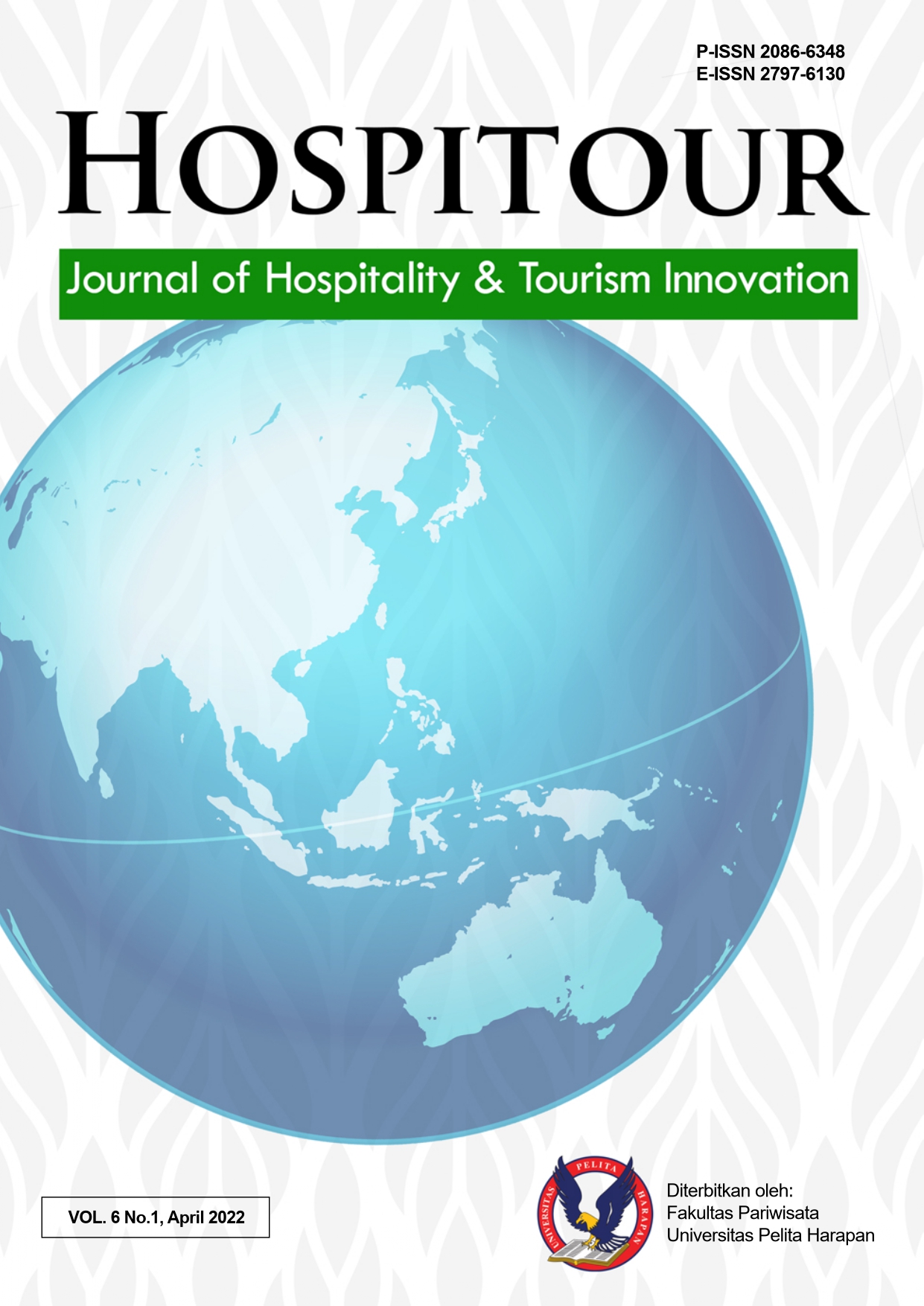CUSTOMER PERCEIVED VALUE TERHADAP PURCHASE INTENTION DI WARUNG RAWIT RESTORAN KHAS KALIMANTAN, PIK
Keywords:
Customer Perceived Value, Purchase Intention, RestaurantAbstract
As the number of restaurants grows, it is important for a company to build customer perceived value so that the products created and offered by the company can attract consumers' buying interest. Warung Rawit, a typical Kalimantan restaurant PIK is a restaurant with the characteristics of Singkawang cuisine, which is a city with various cultures and a city that has its own distinctive taste of cuisine and spices. The purpose of this study was to determine how the dimensions of customer perceived value affect purchase intention at Warung Rawit, a typical Kalimantan restaurant. This type of research is quantitative research. The sample in this study amounted to 99 respondents who were selected using a non-probability purposive sampling technique, using validity tests, reliability tests, classical assumption tests (normality, multicollinearity, heteroscedasticity), hypothesis testing (t test and f test), multiple linear analysis test. , and analysis of the coefficient of determination. The test results show that there is an effect of X1 (Emotional Value), X2 (Social Value), X3 (Quality/Performance Value), X4 (Price/Value of Money) simultaneously on Y (Purchase Intention). The conclusion in this study is that the variable X4 (Price/Value of Money) has a greater influence on the variable Y (Purchase Intention) compared to other variables. This indicates that price and economic value provide the best measure of customer value perceived by consumers before and after making a purchase.
References
Anshori, M., & Iswati, S. (2019). METODOLOGI PENELITIAN KUANTITATIF. Airlangga University Press. Chang, C., & Dibb, S. (2012). REVIEWING AND CONCEPTUALISING CUSTOMER PERCEIVED VALUE. THE MARKETING REVIEW. Volume 12.
Chen, J., and Dibb, S. (2012), “Consumer trust in the online retail context: Exploring the antecedents and consequences”, Psychology and Marketing, Vol. 27 No. 4, pp. 323-346.
Hanjani, Giovani Antania dan Arry Widodo, (2019), Consumer Purchase Intention: The Effect of Green Brand and Green Knowledge on Indonesian Nestle Company, Jurnal Sekretaris & Administrasi Bisnis Volume III, Number 1, 2019.
Kurniawan, A. W., & Puspitaningtyas, Z. (2016). Metode Penelitian Kuantitatif. PANDIVA BUKU
Kotler, Philip and Kevin Lane Keller, 2016. Marketing Managemen, 15th Edition, Pearson Education,Inc.
Rizqia, C. D., & Hudrasyah, H. (2015). The Effect ofElectronic Word-Of-Mouth onCustomerPurchase Intention (Case Study: Bandung Culinary Instagram Account). volume 3
Sugiyono. (2019). METODE PENELITIAN KUANTITATIF, KUALITATIF, DAN R&D. ALFABETA, CV
Sumarwan, U., & Tjiptono, F. (2019). Strategi pemasaran dalam perspektif perilaku konsumen. PT Penerbit IPB Press.
Sweeney, J. C., & Soutar, G. N. (2001). Consumer Perceived Value: The Development of a Multiple Item Scale. Journal of Retailing 77(2), 203-220.
Wang, E. S.-T. (2010). Impact of Multiple Perceived Value on Consumers’ Brand Preference and Purchase Intention: A Case of Snack Foods. Journal of Food Products Marketing, 16(4), 386-397.
Wang, Y., & Tsai, C. (2014). The Relationship between Brand Image and Purchase Intention: Evidence from Award Winning Mutual Funds. The Relationship between Brand Image and Purchase Intention: Evidence from Award Winning Mutual Funds, 8(2), 27-40.
Wijaya, H. S. (2019). PENGARUH CUSTOMER PERCEIVED VALUE , BRAND AWARENESS , DAN STORE ATMOSPHERE TERHADAP CUSTOMER PURCHASE INTENTION KOI THÉ BUBBLE TEA. Agora, 7(2).
Downloads
Published
Issue
Section
License
Authors who publish with this journal agree to the following terms:
1) Authors retain copyright and grant the journal right of first publication with the work simultaneously licensed under a Creative Commons Attribution License (CC-BY-SA 4.0) that allows others to share the work with an acknowledgement of the work's authorship and initial publication in this journal.
2) Authors are able to enter into separate, additional contractual arrangements for the non-exclusive distribution of the journal's published version of the work (e.g., post it to an institutional repository or publish it in a book), with an acknowledgement of its initial publication in this journal.
3) Authors are permitted and encouraged to post their work online (e.g., in institutional repositories or on their website). The final published PDF should be used and bibliographic details that credit the publication in this journal should be included.

